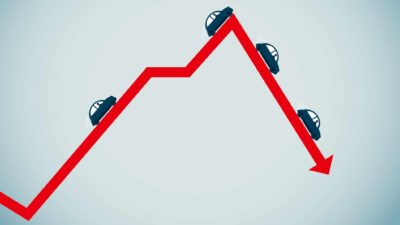This article was originally published on Fool.com. All figures quoted in US dollars unless otherwise stated.
If you follow Warren Buffett and his conglomerate Berkshire Hathaway Inc. (NYSE: BRK.A)(NYSE: BRK.B), then what I'm about to tell you is probably obvious. But if you are new to this stock, it may surprise you to learn that there are two different types of Berkshire Hathaway stock: Class A and Class B.
Class A shares refer to the original Berkshire stock, which has been publicly traded since 1965 and is much more expensive than Class B shares. Berkshire issued Class B shares in 1996 to make Berkshire's stock more accessible to smaller investors.
Both classes of shares attract different shareholders for different reasons. But these days you can purchase either, given the power of technology and how it has made purchasing fractional shares much easier. Does it matter which Berkshire shares you purchase? Let's take a look.
Class A versus class B
Class A shares widely outperformed the broader market between 1965 and 2021, generating a compound annual gain of 20.1% over that time compared to a compound annual gain of 10.5% for the S&P 500 (including dividends), which is a broader benchmark for the market.
With such a long history of extraordinary performance, Class A shares now trade at more than $403,000 each. Meanwhile, Class B shares currently trade at roughly $266. Back in the day, it was a lot harder to get and trade fractional shares, which is why Buffett and Berkshire saw more of a need.
One big difference between the two classes of shares today is that Class A shares have much more voting power. Class B shares only carry 1/10,000th of the voting rights of Class A.
Furthermore, Buffett declared that Class A shareholders will never have to go through any kind of stock split. Meanwhile, Class B shareholders can endure stock splits and did a 50-for-1 stock split in 2010 to make the shares even cheaper. Another difference is that Class A shareholders can convert their shares into an equivalent amount of Class B shares. However, Class B shareholders cannot do the same and would need to sell their shares and then purchase Class A.
In terms of performance, let's go back to the introduction of Class B shares on May 6, 1996, and see how they stack up to Class A since that time. The calculation for Class A is fairly straightforward because there was no stock split and Class A shares made total gains of 1,090% since 1996.
Class B shares of Berkshire opened at about $1,020 per share and rose to about $3,353 prior to the stock split, which dropped shares to about $70.
But after accounting for the stock split and with shares at $266 now, Class B shares made total gains of about 1,050%, slightly underperforming Class A shares.
Does it matter which class you own?
While Class A shares outperformed, I do not see a huge difference in which class you decide to invest in -- remember, you are investing in the same company with the same business model and fundamentals.
Deciding between the two depends more on who you are as an investor and what you are looking for. Smaller investors who may be more passive or newer to investing will likely opt for the Class B shares, as it will generally make buying and selling the stock easier.
Shareholders who follow Berkshire's every move a bit more closely might be more interested in purchasing Class A shares for the enhanced voting power, as well as the visibility of knowing there will never be a stock split. Either way, I don't really think you can go wrong when investing in as strong a company as Berkshire Hathaway.
This article was originally published on Fool.com. All figures quoted in US dollars unless otherwise stated.









